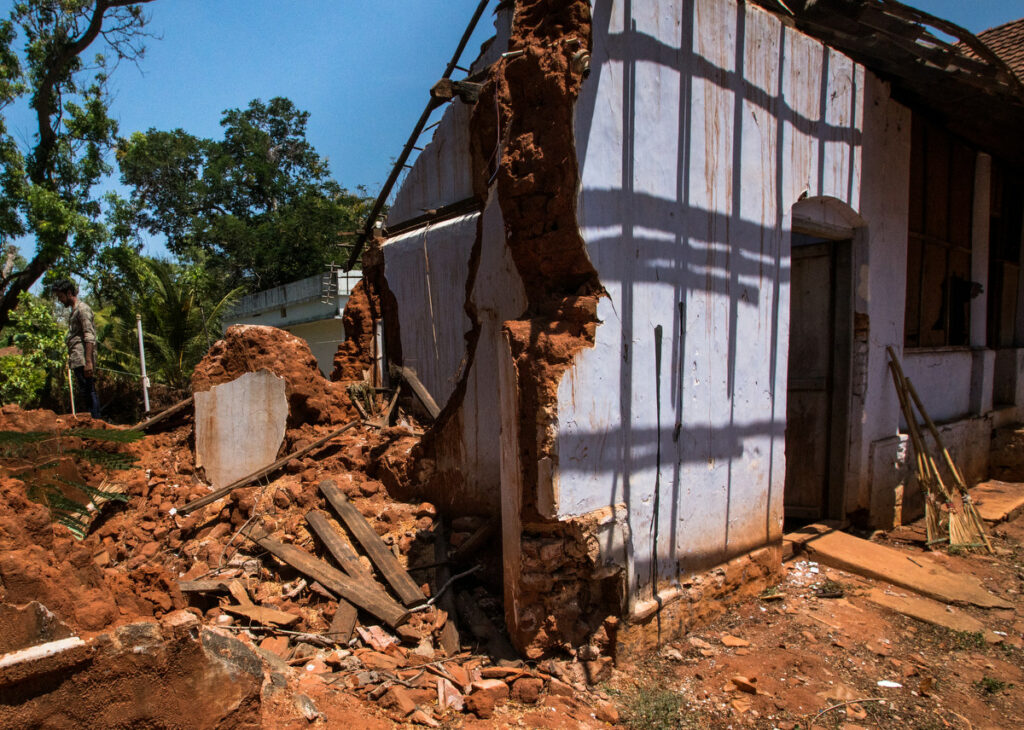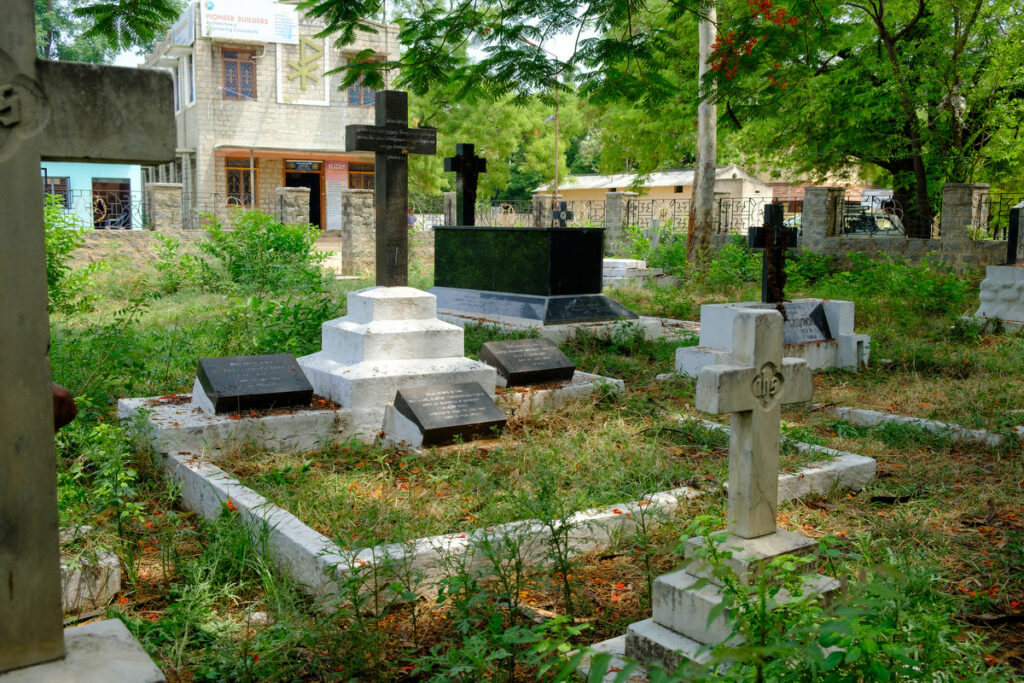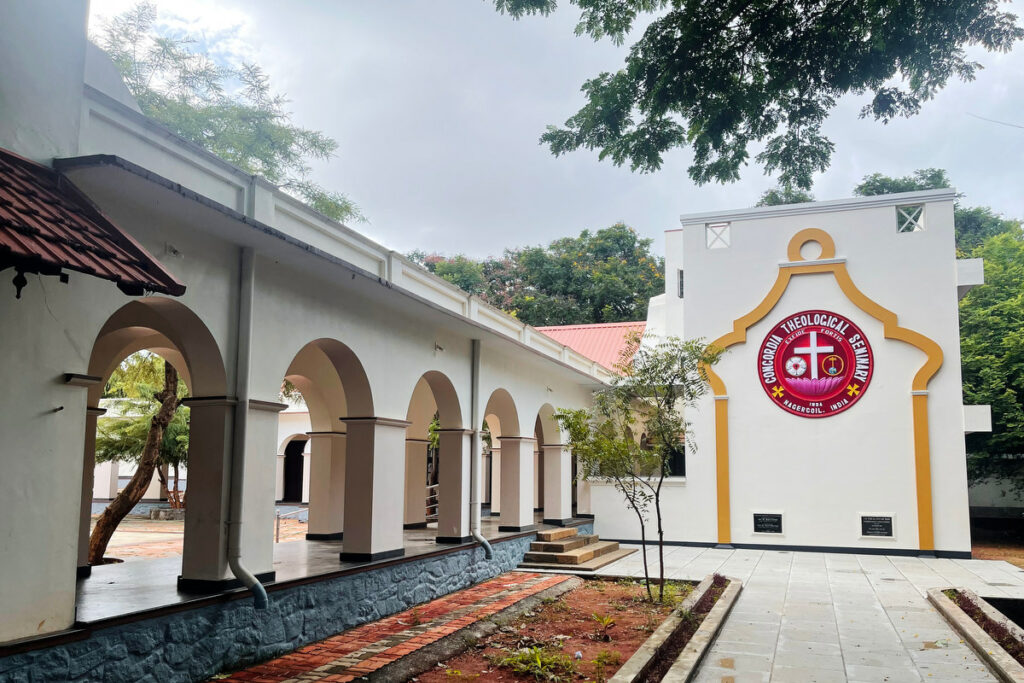Feature
Remembering the Saints
Concordia Historical Institute partners with Concordia Theological Seminary, Nagercoil, India, to help preserve the church’s history.
A hot wind blows through the trees surrounding Concordia Theological Seminary, Nagercoil (CTSN), India, carrying the frenetic sounds of local traffic to the small campus. Built in the 1930s, the seminary campus is steeped in history — the record of which was nearly lost forever.
A ‘Treasure Trove’ at Risk
On Nov. 30, 2017, Cyclone Ockhi made landfall at the southernmost tip of India. The damage from the extreme winds and torrential rain was intense. At the seminary, three buildings were irreparably damaged, and 20 were rendered uninhabitable. Among them was the seminary’s archive, which holds some 14,000 documents pertaining to the history of the seminary; the India Evangelical Lutheran Church (IELC), the LCMS’ partner church in India; and the Missouri Evangelical Lutheran India Mission (MELIM), the LCMS’ missionary program to India in the 19th and early 20th centuries.

“The archival material was at risk of being lost,” says the Rev. Dr. Daniel N. Harmelink, executive director of Concordia Historical Institute (CHI), the Synod’s department of archives and history. Harmelink was a member of the team assembled by the Rev. Dr. Ross Johnson, director of LCMS Disaster Response, to assess the damage to the campus.
After seeing the archives on his initial visit to the seminary, Johnson immediately thought of asking CHI to be involved due to the “treasure trove of historical information” from the Synod’s oldest mission plant. LCMS Disaster Response gave CHI a $15,000 grant to restore the archives, and Harmelink was tasked with evaluating the archives and the material they held. The archives had experienced massive water damage, which led to mold and insect infestation.
“There were big, white ants just munching on the paper,” Harmelink recalls. At the outset, it was a real question whether any of the history of the Nagercoil Lutherans could be saved.
Beginning the Process
Harmelink gathered a crew of students who worked together to stabilize these rare documents, including records of Baptisms and funerals from early Missouri Synod missionaries to India. The rag-tag team removed mold, dust, bugs and debris from the salvageable documents and then stored them in acid-free, archival-quality folders to protect them from further degradation. The Nagercoil seminary then dedicated an environmentally controlled room on campus to serve as the new archive.
During the recovery effort, Harmelink also trained students to photograph the documents so that they could be digitized for an online backup, which made them more accessible for researchers around the world. The procedures used in Nagercoil are nearly identical to those followed at Concordia Historical Institute in St. Louis, Mo.
“The easy thing would have been to bring it to CHI,” Harmelink says. “But that robs them of the opportunity to care for their materials — it’s their history too. It’s the hard road, but it’s the God-pleasing road. CHI wants to do whatever we can to encourage them to preserve how Christ has worked among them as a memorial to Christ.”


Both CHI and LCMS Disaster Response viewed the archives as, in the words of Johnson, a symbol of the “continuity of faith and the work of the church.” The archives — whether at CHI or in Nagercoil — exist to remind us that, as Lutherans, we continue in the same faith as our forefathers.
Preserving the Past
As a result of this ongoing collaboration, CHI has also been able to facilitate increased research into Lutheranism in India. CHI produced an exhibit and an entire issue of Concordia Historical Institute Quarterly on MELIM, as well as a Bible study lesson plan on the history of Lutheran mission work in India, much of which was the result of collaboration with Indian pastors and American missionaries. (Find these resources at CHI’s website.)
The Bible study is now available in two of the languages local to that region thanks to the work of Jayabalan Murthy, who produced the Tamil translation, and CTSN President Rev. Dr. Christu Das, who produced the Malayalam translation. Now, this resource can be used within Indian Lutheran churches to teach about their church’s history.
Though India is one of the Missouri Synod’s oldest mission fields, the work there was deeply challenging. The groundwork of the IELC was laid principally by two men: Bartholomäus Ziegenbalg, a German Lutheran pastor in the 18th century, and Theodore Naether, a German-American LCMS pastor in the 19th century. Both men struggled with ill health and died young, and neither lived to see the fruit of their labors. Naether died after contracting the plague from a mother and child whom he nursed and buried. He literally gave his life for the people he served.
During the archive cleanup process, the volunteers discovered a baptismal register dating back to these early missionary days. The workers wept as they held in their hands the story of how their great-great-great-grandfathers were brought into the faith through the waters of Baptism. It was the story of how their whole family had been saved.
Harmelink has been to Nagercoil three times for a total of six weeks to continue archival training and assess their progress. He returned in June 2022 for the campus’s rededication.

The Rev. Dr. Sam Thompson, professor of theology and ethics at CTSN, reports that the archive is now receiving visitors. “Pastors, laypeople from different churches in IELC … come there to ask for a tour of the archives,” he says. “They are so thankful that the rare documents at the archives are now preserved. Some of them also find delight in finding pictures of their grandparents or congregations from a few generations back. I am so glad about CTSN’s partnership with CHI, and I hope it will continue.” The work is far from complete, but morale is high for this vital project.
American missionaries helped establish the Lutheran church in India, and now our Indian brothers and sisters are providing hope, encouragement and edification through their stories. Because of the work of LCMS Disaster Response and Concordia Historical Institute, the church around the world will remember the saints in India and God’s work among them for generations to come.
Learn More
Pray with Us
Lord of the church, Your faithfulness flows from generation to generation. We thank You for the India Evangelical Lutheran Church, for all the saints who have gone before us and for the testimony of their faith. Let us, in our recalling, learn also to persevere in faith and hope, trusting that Your church will endure for all generations. Bless those who preach and teach Your Holy Word, that all might hear and believe and thus be added to Your holy family, even as You live and reign with the Father and the Holy Spirit, one God, now and forever. Amen.
Share Jesus with the World
Your generosity today makes possible your Synod’s witness and mercy efforts both at home and abroad.
Are you looking to direct your gifts for work that’s more specific?
Visit the LCMS online ministry and mission catalog to find those opportunities most meaningful to you!
Don’t see what you’re looking for?
Contact LCMS Mission Advancement at 888-930-4438 or mission.advancement@lcms.org to talk about all the options available.
Molly Lackey
Social media and special projects assistant at Concordia Historical Institute.

